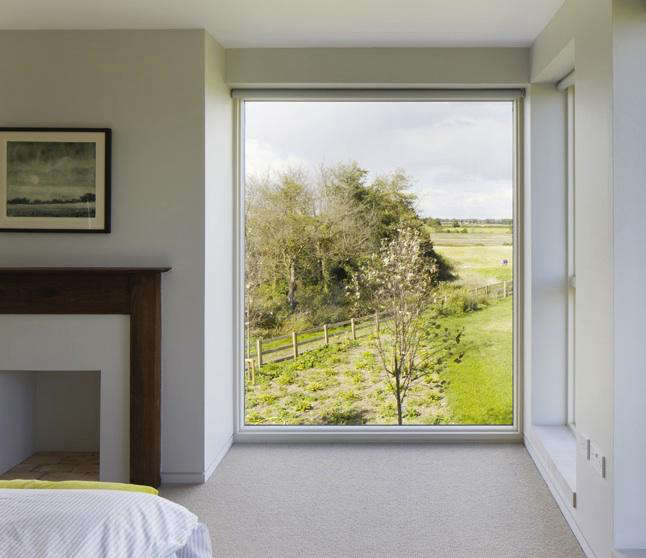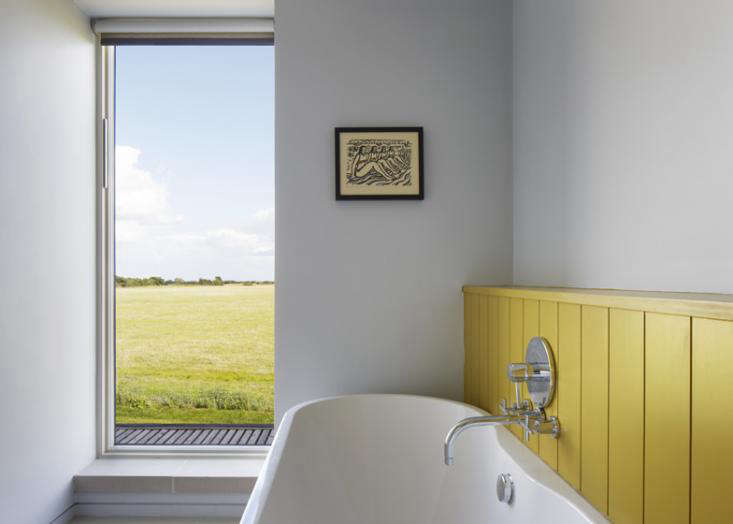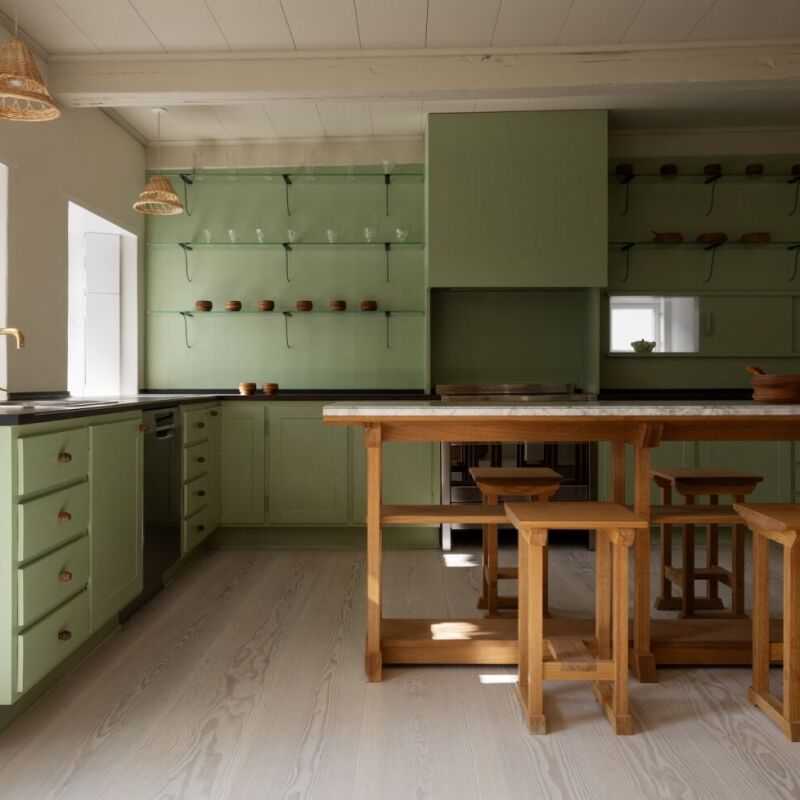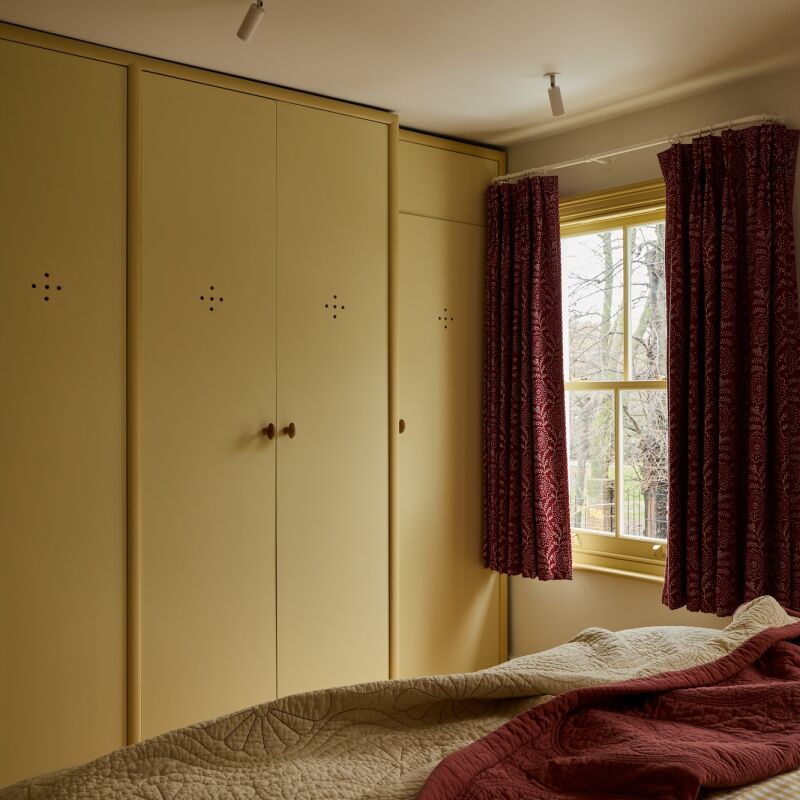Olive greens, goldenrod yellows, muted oranges–these muddied colors inspired painter Ben Nicholson (and UK Remodelista editor Christine; see her paen to Nicholson here).
We couldn’t help but think of Nicholson’s nuanced palette when we spotted this modern farmhouse by British architect Lucy Marston on Dezeen. Says Marston, “We used whitewashed brickwork, painted timber linings, and exposed ceiling beams to give honest depth, texture, and character to a modern interior.” To see more, go to Lucy Marston Architects.

Above: Marston references the English farmhouse vernacular in her design for this modern grange, using red brickwork, a steep gabled profile, and a corner chimney.

Above: Crisp geometry prevails.

Above: A modern hallway warmed with olive green accents.

Above: Another view of the enfilade-like transition spaces.

Above: Sunlight slants through the living room.

Above: In the kitchen, a trio of orange red pendants adds a dash of color

Above: Light animates the space via windows overlooking the meadows beyond.

Above: The living room overlooks the rolling countryside beyond.

Above: Marston pays close attention to transition spaces.

Above: An olive green wall slat partition contrasts with a pale blue wall.

Above: Pure volumes in the bedrooms.

Above: Every room in the house overlooks the bucolic countryside.

Above: In the bath, a marigold yellow backsplash adds a note of cheer to the otherwise spare space.

Above: Yellow and gray; an inexplicably satisfying color pairing.

Above: At night, the house glows like a lantern.




Have a Question or Comment About This Post?
Join the conversation (10)